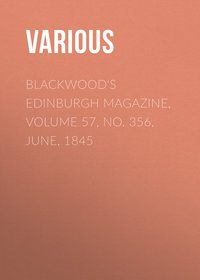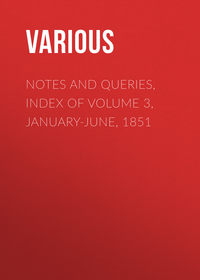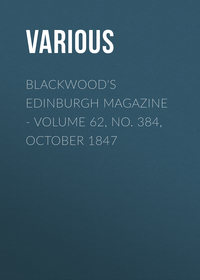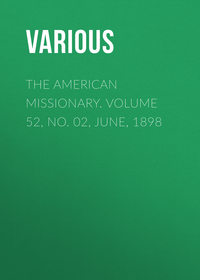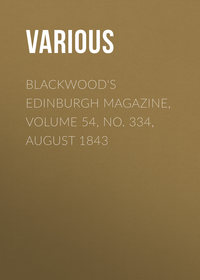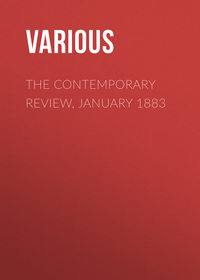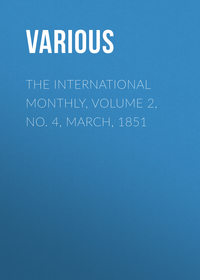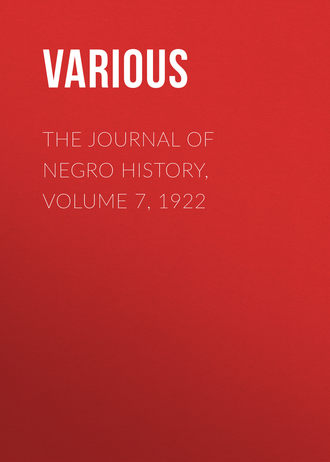 полная версия
полная версияThe Journal of Negro History, Volume 7, 1922
Wait Palmer, of Stonington, Connecticut, moreover, was, as his biographer states, "an actor in the great New Light, or Separatist movement," and in this capacity he "preached often in destitute regions." Benedict testifies that "he became a famous pioneer in Virginia and North Carolina." But what is more, Mrs. Marshall, the mother of Abraham Marshall, of Kiokee, Georgia, was a sister of Shubal Sterns, and Shubal Sterns was baptized and ordained to the work of the ministry by Wait Palmer, at Tolland, Connecticut, in the spring of 1751. It was but natural that, in his zeal to preach Christ in destitute regions, Palmer would visit this Connecticut family and preach the gospel to any who might desire to hear it.
If it should be thought by some that no man would, in the circumstances, have gone on a preaching tour from Connecticut to South Carolina, it may be well to recall the fact that Rev. Abraham Marshall covered the ground in question, in the year 1786, travelling both ways on horseback, preaching nearly every day during the three months he was away from home. But Palmer was now in the South and not in the North, as Benedict states. No other Palmer, known to Baptists, fits the case like this friend of Shubal Stearns. We shall continue to assign to him the credit of the first Negro Baptist Church in America, until we can find another "Elder Palmer," whose claim is absolutely certain. See Rippon, Annual Baptist Register, 1790-1793, pp. 475-476; Catheart's Baptist Encyclopedia, II, 882.
234
Rippon's Annual Baptist Register, edition 1790-1793, pp. 473-480, and compare article, Sir Archibald Campbell, in Appleton's Cyclopedia of American Biography, Vol. I, p. 511.
235
See Bill's letter of March 12, and one of March 14, 1776; also March 26, 1776, printed in Gibbes' Documentary History of the American Revolution (South Carolina), Vol. I, pp. 266-273. Compare with letter in Vol. II, p. 62. See also Dunmore's Emancipation Proclamation issued in November, 1775, in Joseph T. Wilson's Emancipation, pp. 36-37.
236
Cyclopedia American Biography, Vol. I, p. 511. Compare with Rippon's Annual Baptist Register, edition 1790-1793, pp. 332-333.
237
Cathcart's Encyclopedia, Vol. II, p. 749, and compare article of John Houston in Appleton's Cyclopedia of American Biography, Vol. III, p. 273.
238
Appleton's Cyclopedia of American Biography, Vol. IV, p. 219. Compare Vol. III, p. 273. See article, Savannah in Appleton's American Cyclopedia, Vol. III, p. 646.
239
See Drayton's letter in Gibbes' Documentary History of American Revolution (South Carolina), Vol. I, p. 162, and for distance from Silver Bluff compare letter of Tennett, p. 235, note in Lossing's Field Book of Revolution, Vol. II, p. 484.
240
Gibbes' Documentary History of the American Revolution (South Carolina), Vol. I, pp. 235-236, letter of Tennett, of September 7, 1775.
241
Rippon's Annual Baptist Register, 1770-1773, pp. 332-337.
242
Ibid., 1790-1793, p. 344.
243
White's History of Georgia, pp. 246-247; Jones, Vol. II, p. 137.
244
State Papers, Indian Affairs, Vol. I, G. No. 2, p. 32.
245
See Jonathan Odell, Appleton's Cyclopedia of American Biography, Vol. IV, p. 556; Rippon's Annual Baptist Register, 1790-1793, p. 481; Bill's History of the Canadian Baptists, pp. 26, 176, 653, 657. Compare with Rippon's Annual Baptist Register for 1798-1800, p. 336.
246
Sabine's American Loyalists, Vol. I, p. 127. Compare pp. 122-123.
247
G. W. Hervey, Story of Baptist Missions in Foreign Lands, p. 596. Compare article on Sierra Leone in Appleton's American Cyclopedia, Vol. XV, p. 32; also article on Nova Scotia, Vol. XII, pp. 524-525; See Rippon's Annual Baptist Register, 1790-1793, pp. 481-483. See also article on Sierra Leone in The Earth and its Inhabitants—Africa—Vol. III, p. 207.
248
Rippon's Annual Baptist Register, 1790-1793, pp. 481-484.
249
Rippon's Annual Baptist Register, 1790-1793, pp. 473, 544-545; 1791, p. 336; 1793, pp. 540-541.
250
Joseph T. Wilson's Emancipation, pp. 36-38; Dunmore's Emancipation Proclamation issued 1775.
251
Rippon's Annual Baptist Register, 1793, pp. 540-541.
252
Ibid., 1791, p. 336.
253
White's Historical Collections of Georgia, p. 316.
254
Benedict's History of the Baptists, p. 170.
255
Rippon's Annual Baptist Register, 1798-1801, p. 367. Compare 263.
256
Ibid., p. 263.
257
Rippon's Annual Baptist Register, 1790-1793, p. 476.
258
Benedict's History (edition 1848), p. 723.
259
Benedict's History of the Baptists (edition 1813), Vol. II, p. 193.
260
Article on Augusta, Georgia, First Baptist Church of, Cathcart's Baptist Encyclopedia, Vol. I, p. 49.
261
James M. Simm's First Colored Baptist Church in North America, p. 57.
262
Ibid., pp. 58-59.
263
Benedict's History of the Baptists, edition 1813, Vol. II, p. 193, quoted from Rippon's Annual Baptist Register.
264
Rippon's Annual Baptist Register, 1791, p. 336.
265
White's Historical Collections of Georgia, p. 316; Benedict's History of the Baptists (edition 1848), p. 740. Compare with Rippon's Annual Baptist Register, 1793, p. 545. Benedict's History of the Baptists, edition 1848, p. 727, note 5, shows no white minister was present except Abraham Marshall, and he says here he "assisted in the constitution of the church, and the ordination of the minister."
266
Benedict's History of the Baptists (edition 1813), Vol. II, p. 193.
267
Rippon's Annual Baptist Register, 1791, p. 332.
268
Hervey's Story of Baptist Missions in Foreign Lands, pp. 611-612; Cox's History of the British Baptist Missionary Society, 1792-1842, p. 12. Phillipo, Jamaica, Past and Present; E. K. Love's History First African Baptist Church, p. 35; Brown, Propagation of Christianity among Heathen, Vol. II, p. 94.
269
Rippon's Annual Baptist Register, 1791, p. 336, and compare Rippon's Annual Baptist Register, 1790-1793, pp. 476, 481-483.
270
Ibid., 1791, p. 344.
271
Ibid., 1791, p. 336.
272
Benedict's History of the Baptists (edition 1813), Vol. II, p. 206.
273
James M. Simm's The First Colored Baptist Church in North America, p. 15.
274
"Andrew Bryan, and his brother Sampson, who was converted about a year after Andrew was, were twice imprisoned and they with about fifty others, without much ceremony, were severely whipped. Andrew was inhumanly cut and bled abundantly; but while under their lashes he held up his hands and told his persecutors that he rejoiced not only to be whipped but would freely suffer death for the cause of Christ." Baptist Home Missions in America, 1832-1882, Jubilee Volume, p. 388.
275
Benedict's History of the Baptists, edition 1848, p. 170. Compare with p. 723.
276
Rippon's Annual Baptist Register, 1793, p. 545.
277
Rippon's Annual Baptist Register, 1793-1801, p. 367. Compare with Clark's letter, 1790-1793, p. 540.
278
For the leading facts of the life and history of Mauritius see the following: Charles Pridham's England's Colonial Empire (London, 1846); Le Premier Établissment des Neerlandais à Maurice; A Transport Voyage to the Mauritius and Back; Baron Grant, History of Mauritius or the Isle of France and the Neighboring Islands; Jacques Henri Bernardin de St. Pierre, A Voyage to the Island of Mauritius, the Isle of Bourbon, the Cape of Good Hope, etc. (London, 1775); Le Baron d'Unienville, Statistique de l'île de France et ses Dépendances (Paris, 1838); M. J. Milbert, Voyage pittoresque de l'île de France à Cap de Bonne Espérance et à l'île de Teneriffe (Paris, 1812); Adrien d'Epinay, Renseignements pour servir à l'histoire de l'île de France jusqu'à l'année 1810, inclusivement, précédés de notes sur le découverte de l'île sur l'occupation hollandaise; Henri Prentout, L'île de France sous Decaen, 1803-1810 (Paris, 1901); Patrick Beaton, Creoles and Coolies (London, 1858); Nicholas Pike, Subtropical Rambles in the Land of the Aphanapteryx (New York, 1873); and An Account of the Island of Mauritius and its Dependencies by a Late Official Resident.
279
Adrian d'Espinay Renseignments, etc., 112-113; An Account of the Island of Mauritius, 19.
280
Grant, History of Mauritius, 74.
281
Grant, History of Mauritius, 74-75.
282
Grant, History of Mauritius, p. 75, 1801.
283
Pridham, England's Colonial Empire, I, 160.
284
Beaton, Creoles and Coolies, 94-111; An Account of the Island of Mauritius and its Dependencies by a Late Official Resident, p. 19; Adrien d'Epinay, Renseignments, etc., pp. 112-113.
285
Henri Prentout, L'île de France sous DeCaen, 126.
286
Pridham, p. 154.
287
Ibid., p. 156.
288
Pridham, p. 157.
289
Pridham, pp. 164, 165.
290
Bernardin de St. Pierre, A Voyage, etc., pp. 100-105.
291
Pridham, p. 161.
292
Ibid., pp. 175-175.
293
This extract and the documents which follow were collected by Dr. R. E. Park.
294
The Springfield Republican, Dec. 6, 1902.
295
On March 27, 1861, certain Howard County citizens petitioned for money advanced by them to prosecute Anderson in the Canadian Courts (Session Laws, 1860, p. 534).
296
For Mrs. Haviland's story see her book, "A Woman's Life Work," published at Grand Rapids, Mich., in 1881. Anderson's story as told to her is found on pages 197-8.
297
See The Toronto Globe, Nov. 14, 1860.
298
Quoted in The Toronto Globe, Nov. 29, 1860.
299
The Toronto Globe, Dec. 3, 1860.
300
Life of Sir John Beverly Robinson, London, 1904, pp. 326-7.
301
The proceedings of this meeting are reported at length in The Globe of the following day.
302
Article X of the Ashburton Treaty, dealing with extradition, reads as follows: "It is agreed that the United States and Her Britannic Majesty shall, upon mutual requisition by them, or their ministers, officers, or authorities, respectively made, deliver up to justice all persons who, being charged with the crime of murder, or assault with intent to commit murder, or piracy, or arson, or robbery, or forgery, or the utterance of forged paper, shall seek an asylum, or shall be found within the territories of the other; provided that this shall only be done upon such evidence of criminality as, according to the laws of the place where the fugitive or person so charged shall be found, would justify his apprehension and commitment for trial, if the crime or offence had there been committed, etc."
303
Congressional Record, 44th Congress, First Session.
304
Simmons, Men of Mark, 699-703.
305
Congressional Record, 44th Congress, 1st Session, pp. 2100-2105.
306
Ibid., pp. 736, 1547, 5138.
307
Congressional Record, 1st Session, pp. 1444, 1445.
308
Congressional Record, 44th Congress, 1st Session, pp. 2100-2105.
309
Congressional Record, 44th Congress, 1st Session, p. 2104.
310
Congressional Record, Forty-sixth Congress, 1st Session, p. 2104.
311
Ibid., p. 2105.
312
Congressional Record, Forty-sixth Congress, 2d Session, pp. 2195-2196.
313
Congressional Record, Forty-fifth Congress, 1st Session, pp. 201, 245; 3d Session, pp. 1314, 1316, 2309.
314
Ibid., Forty-sixth Congress, 1st Session, pp. 45, 71, 435, 1679, 2415; 3d Session, pp. 632, 668.
315
Congressional Record, Forty-sixth Congress, 2d Session, pp. 45, 273, 538.
316
Ibid., pp. 1619, 1953, 2053, 2384, 4563.
317
See Simmons, Men of Mark, pp. 699-703.
318
Edwards, History of Illinois, 179.
319
Nicolay and Hay, Abraham Lincoln, I, 72; W. H. Lamon, Life of Abraham Lincoln, 83.
320
Nicolay and Hay, Abraham Lincoln, I, 15, 140, 151, 642.
321
Nicolay and Hay, Abraham Lincoln, I, 148, 285-288.
322
Nicolay and Hay, Abraham Lincoln, I, 286.
323
Ibid., I, 373, 375, 380-390.
324
Ibid., I, pp. 391, 392.
325
Nicolay and Hay, II, 85, 89.
326
Nicolay and Hay, II, 136-138, 143.
327
Nicolay and Hay, II, 137, 156, 157; Lincoln-Douglass Debates, p. 8.
328
Nicolay and Hay, II, pp. 75, 147.
329
Ibid., II, p. 149.
330
Nicolay and Hay, II, 156, 157, 216.
331
Murat Halstead, Conventions of 1860, 6.
332
Ibid., 7.
333
Nicolay and Hay, II, 255.
334
Nicolay and Hay, II, 287, 382.
335
Rhodes, United States, III, p. 357.
336
Burgess, Civil War, II, p. 76.
337
Nicolay and Hay, Abraham Lincoln, IV, 416-420; V, p. 211.
338
Burgess, Civil War, II, 79-80.
339
Nicolay and Hay, V, 206.
340
Nicolay and Hay, V, 207.
341
Dodge, View, chap. xi.
342
Nicolay and Hay, V, p. 209.
343
McPherson, History of the Rebellion, p. 210.
344
Nicolay and Hay, V, 214.
345
Ibid., VI, p. 90.
346
Nicolay and Hay, VI, 94-96.
347
Ibid., VI, 97.
348
Nicolay and Hay, VI, 99-100.
349
Nicolay and Hay, VI, 103.
350
Ibid., VI, 107.
351
Ibid., VI, pp. 109-111.
352
King, New Orleans, ch. xiii.
353
Dodge, View, ch. x.
354
Nicolay and Hay, VI, p. 121.
355
Ibid., VI, pp. 123-124.
356
Warden, Life of S. P. Chase, p. 439.
357
F. B. Carpenter, Six Months at the White House, pp. 20-22.
358
Dodge, View, ch. xiv. Rossiter Johnson, History of War of Secession.
359
Nicolay and Hay, VI, 155.
360
Dodge, View, pp. 102-115.
361
Nicolay and Hay, VI, pp. 168-169.
362
Nicolay and Hay, VI, p. 164.
363
Extract from The Cream of Curiosity, by Reginald L. Hine, 1920, pp. 291-316.
364
To this day no news has reached England of Isaaco's death, and indeed after all he survived it seems impossible that he should ever die.
365
Isaaco was better able to appreciate their music than Mungo Park. In one item of his accounts, the latter writes: "To the native singers for singing their nonsense."
366
It must be remembered that Isaaco was writing a government report and careful to suppress all signs of indecorum. What a heap of money one would give to possess his private, unexpurgated journal!
367
A priest of Yaour to whom Amady Fatouma, the guide, had given a small present from Mungo Park.
368
Mansong had sold it to Park for a quantity of firearms. It was half rotten and took eighteen days to make water-tight. Forty feet long by six broad and flat-bottomed. They christened it "His Majesty's Schooner Joliba."
369
These articles were arranged by Monroe N. Work.
370
Keller, Albert Galloway, Ph.D., Colonization, Boston, Copyright, 1908, p. 145.
371
DuBois, William Edward Burghardt, The Negro, New York, 1915, p. 164.
372
Keller, pp. 156-157.
373
Ibid.
374
Christie, W. D., Notes on Brazil, London, 1821, pp. 69-76.
375
Christie, pp. 69-76.
376
Dawson, Thomas C., South American Republics, two volumes, first edition, vol. I, New York, Copyright, 1903, p. 481.
377
DuBois, The Negro, p. 152.
378
Ibid. p. 184.
379
Negro Population in the United States, 1790-1915, p. 33.
380
Ingram, J. K., A History of Slavery and Serfdom, London, 1895, p. 285.
381
Bureau of Census (Dept. of Commerce and Labor), A Century of Population Growth, Washington, 1909, p. 80.
382
Blake, William O., A History of Slavery and the Slave Trade, Columbus, 1857, p. 808.
383
DuBois, The Negro, p. 190.
384
Henderson, James, A History of Brazil, London, 1821, pp. 73-74.
385
Koster, Henry, Travels in Brazil, second edition, in two volumes, vol. II, London, 1817, pp. 247-259.
386
Christie, pp. 69-76.
387
Koster, p. 123.
388
Ibid., pp. 247-259.
389
Koster, pp. 247-259.
390
Americana, pp. 395-396.
391
Koster, pp. 229-231.
392
Koster, pp. 246-247.
393
Southey, vol. III, pp. 781-783, states that in Pernambuco masters were opposed to selling their slaves.
394
Koster, pp. 246-247.
395
Brawley, Benjamin Griffith, A Short History of the American Negro, N. Y., 1917, pp. 20-21.
396
DuBois, p. 197.
397
Americana, pp. 395-396.
398
Koster, pp. 238-239.
399
Ibid.
400
Koster, pp. 236-238.
401
Luccock, John, Notes on Rio de Janeiro and the Southern Part of Brazil, London, 1820, p. 591.
402
Koster, pp. 229-231.
403
Christie, p. 578.
404
Luccock, p. 591.
405
Koster, pp. 233-235.
406
Ibid.
407
Keller, pp. 156-157.
408
Blake, p. 808.
409
Brawley, pp. 20-21.
410
Henderson, pp. 72-78.
411
Brawley, p. 90.
412
DuBois, p. 196
413
Ibid.
414
Brawley, p. 90.
415
Dawson, p. 375.
416
Henderson, pp. 339-340.
417
Henderson, p. 340.
418
Ibid., p. 340.
419
Brawley, p. 22.
420
Koster, ch. XVIII
421
Mossell, Toussaint L'Ouverture, p. xiii.
422
Hardy, Negro Question in French Revolution, p. 1.
423
Moreau de St. Méry, Response, etc., 72.




